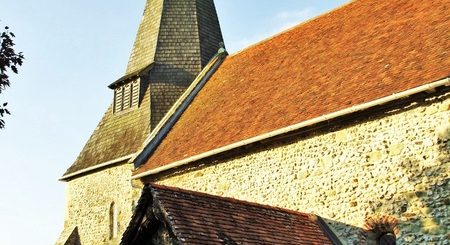The Brahan Seer
The Brahan Seer is undoubtedly the most famous of all Celtic seers although the reality of the 17th Century Coinneach Odhar Fiosaiche or Kenneth Mackenzie is hidden deep in legend. The roots of these legends may have come from a holy man in the 1600’s, about whom legends have grown with the years. It has also been surmised that Kenneth may be an amalgamation of several seers from the 16th Century and beyond and that the prophesies have been changed and adapted over the centuries from numerous sources.
The Highlands of Scotland have a long history of seers and those gifted with the second sight. The possible earliest written reference to the Brahan Seer is found in the Bannatyne’s ‘History of the Macleods’ from 1832. Hugh Miller’s ‘Scenes and Legends of the North West of Scotland’ from 1874 mentions that he was labourer near the Brahan Castle, born in Baile na Cille on Lewis. He is reputed to have used a white stone with a hole in it to see into the future. (Stones with natural holes were once believed to have magical properties, and have a long history of folk use).
 He worked at the castle for the Seaforth Mackenzies and offended Issabella the Countess of Seaforth who had him tried for witchcraft and burned alive in a barrel of tar at Chanonry Point in Fortrose between 1665 and 1675 (or 1577 in some versions). He suffered this terrible fate because he told the countess of a vision in which her husband was in the arms of another woman.
He worked at the castle for the Seaforth Mackenzies and offended Issabella the Countess of Seaforth who had him tried for witchcraft and burned alive in a barrel of tar at Chanonry Point in Fortrose between 1665 and 1675 (or 1577 in some versions). He suffered this terrible fate because he told the countess of a vision in which her husband was in the arms of another woman.
Before he died he is reputed to have made a prediction about the fall of the Seaforth Mackenzies. The curse/prediction is basically that the last Laird Mackenzie would be deaf and mute, that he would die after his sons, that the lands would be inherited by a white hooded widow from the East who will kill her sister, and that all this would come to pass in the time of four great Lairds: 1 buck toothed, another hare lipped, the third half witted and the fourth with a stammer.
The curse was reputed to have been played out in 1816 when Francis Humbertson Mackenzie(who was hard and reluctant to talk after contracting scarlet fever) outlived his son, and the four Lairds of Chisholm, Grant, Raasay and Gairloch were all as described in the prophesy.
In some ways the Brahan Seer can be seen as Scotland’s Mother Shipton in that many of the prophesies were published after the fact, and in some cases are vague enough to be adapted to a number of situations and events, although his most famous one about the fate of the Seaforth Mackenzies is supposed to have been known well before the 19th C. The most detailed version of his prophesies were published in 1899 in Alexander Mackenzies: The Prophesies of the Brahan Seer.
There is no real evidence that the Brahan Seer existed as a single person and there is a similarity between his prophesies and the sayings of other seers such as those from the Islay Seer: Am Fiosaiche Ileach. Prophesies have always had the power to intrigue and the ones of the Brahan Seer are so specific to Scotland and Scottish culture that they have survived and been adapted over the centuries to what we have today. Of course these are now subject to the sometimes twee romanticisms of the tourist industry.
The legend still has enough endurance to affect decisions today. I have talked to people who will not use the Ferry named the Isle of Lewis Ferry because they believe that is was prophesised that the Isle of Lewis would sink by the Brahan Seer and they have taken this to be the Ferry rather than the island.
His many supposed predictions include Straffpeffer becoming a Spa town, and the Highland Clearences of the 1800’s.Here is an abridged version of one of the prophesies:
When there are 7 bridges over the Ness Inverness will be consumed with fore from Black rain and tumble into the sea. Sheep shall eat men, men shall eat sheep, and a black rain shall eat all things. This prophesy is supposed to cover the period of the Highland clearances although the black rain part of this has been the subject of speculation for many years.



Recent Comments